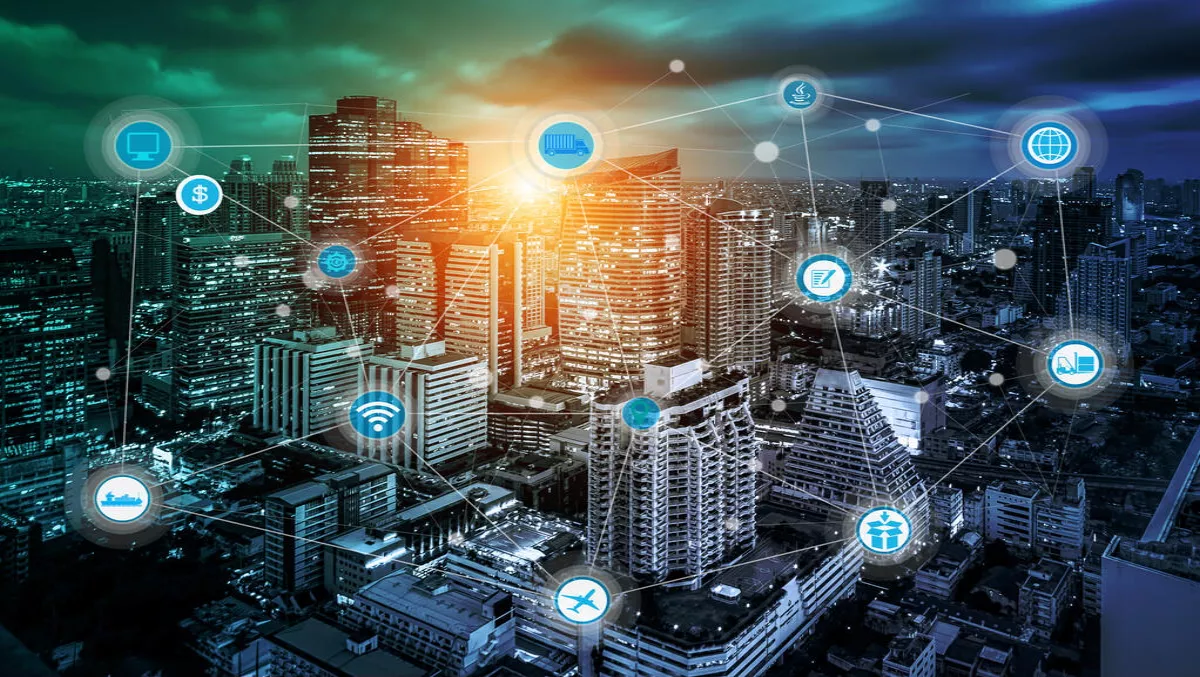
Seven pieces of the IOT puzzle from Microsoft
The internet of things or IOT is a growing technology trend that foresees billions of devices in locations - scenarios that we've often never imagined before.
These devices could be very simple tracking devices through to sophisticated monitoring units that are collecting hundreds of feeds of data real-time.
Both our home lives and business environments will be impacted by this network of devices. In a consumer setting, fridges could be reordering groceries automatically, or the health of patients monitored remotely. In business, examples vary from tracking delivery vehicles all the way through to monitoring factory machinery throughput. Lastly in government, environmental or traffic monitoring are simple examples amongst many more.
In each of these and thousands more examples, complex systems are needed to collect, ingest, process and analyse the stream of data. Some of these streams of data can include audio, video as well as text data. These streams of data can also become enormous, with autonomous cars, for example, generating tens of gigabytes of data per minute.
Microsoft has and is continuing to assemble a sophisticated toolset for tackling IOT. Here are nine examples:
Azure IOT Hub
The tool has three key functions. It acts as an asset monitoring solution, which enables you to catalogue and monitor the status of vast numbers of devices or assets in the field.
Secondarily the IOT hub is an ingestion engine to receive the initial raw data from the devices or assets to start their journey through your systems.
Lastly, it can also work as an engine to send actions or instructions back to the device.
Cleverly all of these are done in such a way that devices can be intermittently connected without any issues.
Azure Events Hubs
With the devices deployed and IOT Hub ingesting the massive stream of data from them, you now need to work out where this data will flow.
Azure Events Hub is almost like the traffic controller in the centre of your IOT project. It provides a hyper scale service that enables you to transform the data stream and decide it's next destination. You could send it to ASA (explained below) for real-time processing, send it to a system of record like Dynamics (explained below) or just store the data.
As a distributed streaming platform, it gives you low latency and configurable time retention, which enables you to ingress massive amounts of telemetry into the cloud and read the data from multiple applications or streams.
Azure Stream Analytics (ASA)
As more and more data is generated from these IOT devices transforming this data into actionable insights and predictions in near real-time is now an operational necessity.
Easily develop and run massively parallel real-time analytics on multiple IoT or non-IoT streams of data using simple SQL-like language. Use custom code for advanced scenarios. An extensive array of out-of-the-box connectors, advanced debugging and job monitoring capabilities help keep costs down by significantly lowering the developer skills required. With no infrastructure to manage, you can process data on-demand, scale instantly, and only pay per job.
Azure Stream Analytics seamlessly integrates with Azure IoT Hub and other Azure services.
Azure Functions - Azure Notification Hubs
After the real-time processing of your data using ASA, there will be some urgent actions that need to take place.
Azure Functions supports triggering an event, based on an activity or anomaly in your data stream. For example, execute almost any code, send email alerts or make decisions to send back to the device instructions on what to do next.
Azure Notifications is a natural extension of this to send push notifications on a massive scale to iOS, Android, Windows, Kindle devices or even through services like Baidu.
Microsoft Power BI
After you've processed your data and sent off the urgent notifications. Your data needs transforming into something more usable.
Microsoft Power BI (Business Intelligence) takes your data and displays it visually so you can glean the maximum insights from it. The tool allows for interactive desktop reporting or displaying as a public dashboard on a large screen in your office.
Microsoft Dynamics 365
In the IOT world systems of record like Microsoft Dynamics 365 are often called historians. Although bringing your data into Dynamics can do much more than just record what happened at a specific time, but also trigger off events.
For example, a sensor could notify your systems that something is going wrong, this finds its way to Dynamics, it's recorded against the asset information, and a service job is created for a field technician to go and make the necessary repairs.
Also, contact centre staff can see the full history of a device or asset when interacting with clients.
Azure Logic Apps
With the same ideas explained above in relation to Microsoft Dynamics 365. Some organisations might instead be using other systems like SAP, Oracle ERP, Salesforce or other systems.
Azure Logic Apps is real-time data connection tool. That would enable your IOT data to flow into other systems, whether they're in the cloud or on premises.
Many out-of-the-box cloud-based connectors are available including Salesforce, Office 365, Twitter, Dropbox, Google services, and more. New connectors are being added to the Azure Marketplace all the time.
Blueprints
While not strictly a tool of their own. Microsoft has put together three impressive, yet easy to follow blueprints for the best practice implementation of an IOT data solution.
These could really help accelerate your time to deployment as you can see the tools and code that Microsoft would use if building the solution.
The three blueprints currently available are: - Remote monitoring - Predictive maintenance - Connected factory


